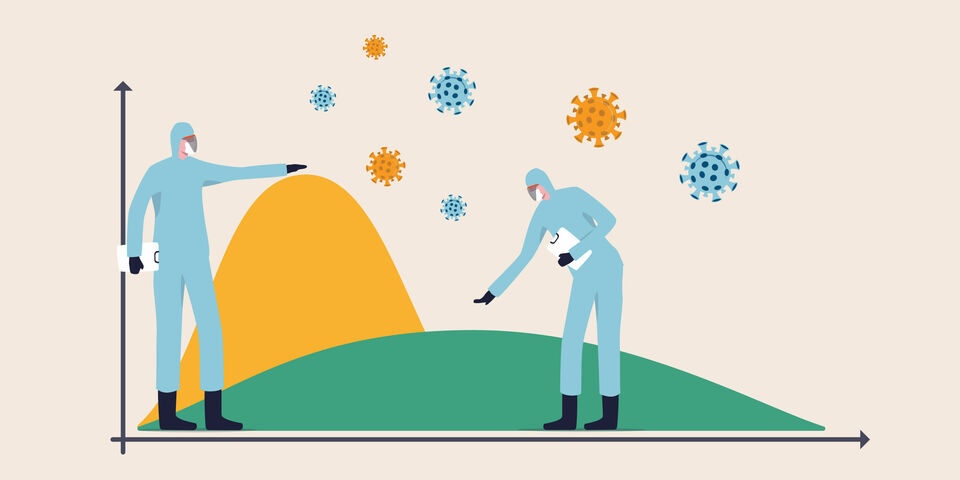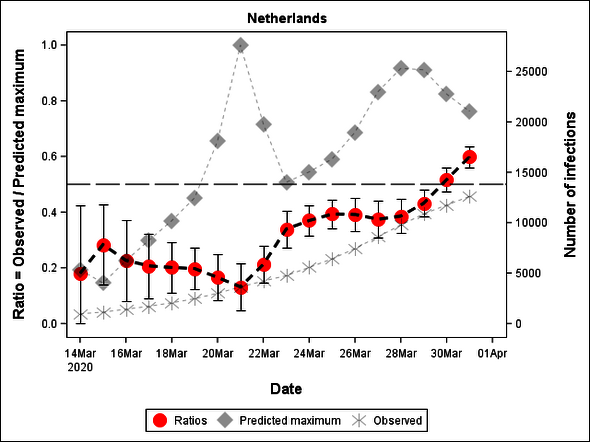'The Netherlands have passed the inflection point in number of infections'
The Netherlands appear to have passed the so-called inflection point in the number of confirmed corona virus infections. That is what scientists at TU/e say, who have been making daily predictions of the number of infections and deaths in several countries since the start of the corona outbreak in the Netherlands. This means that according to them there is now a flattening in the number of new infections, and that on average these will only decrease from now on.
The researchers came to their conclusion based on the ratio between the number of confirmed infections and the total expected maximum that they have calculated daily for the Netherlands (and other countries) since the start of the outbreak. "For the second day in a row, this ratio exceeds fifty percent," said Edwin van den Heuvel, a professor of statistics at TU/e who initiated these predictions with two colleagues. “This means that we are now probably over half of the total number of infections measured. We are not there yet, but we are on the right track, as Prime Minister Rutte said during his press conference on Tuesday.” Their estimate of the ultimate maximum number of infections in the Netherlands has now fluctuated around twenty thousand for a few days.
North Brabant
A day earlier, the researchers had already seen the inflection point passing in the province of North Brabant, which is in line with the signals from the hospitals in Brabant that the number of new cases is decreasing. Spain also appears to have passed the inflection point, according to the same calculations.
The researchers substantiate this conclusion with figures from other countries, where they have calculated the same ratio daily. "In Italy around March 24 we saw that this ratio exceeded fifty percent," says Van den Heuvel. "In Italy this meant the actual start of the flattening and we saw new numbers decrease on average."
S-curve
According to Van den Heuvel it follows from the analyses that here in the Netherlands we are now about halfway along the curve in terms of time. Not that we should draw too many conclusions from this. “Take South Korea for example, where they spent a long time closely following the S-curve, but where the number of infections is now increasing linearly. We need to establish whether this might be due to changes they made to their rules.”
In the early weeks, the vast majority of predictions for a couple of days ahead came within ten percent of the actually measured value, the professor points out. “However, you can see wide fluctuation between the expected maximums in the initial phase. This stabilizes as soon as you pass the tipping point, as now seems to be the case in the Netherlands. I think there is still scope for the ultimate maximum to be slightly higher than expected, but the discrepancy won't be huge. We also have to wait and see, however, how the new test policy here in the Netherlands will affect the figures."
Measures seem to work
The researchers were also able to demonstrate that the relative speed with which new infections of the virus have occurred in the Netherlands has decreased since the schools and other public institutions here closed their doors. They saw the same in Italy, Spain, France and Germany. "So it seems that the measures are working," says Van den Heuvel, although he hastens to say that it is very important to continue with the so-called 'intelligent' lockdown and not give the virus a chance to strike back.



Discussion